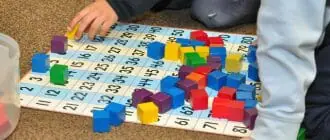Today I am going to introduce you to something you may not have thought of before. There is always sound in the background of life generally and the classroom specifically. Whether it is tweeting birds outside the windows or the hum of the air conditioner, sound sets an ambiance in any room. Classrooms are no different, and research shows that soft background music in a classroom actually supports focus and learning in the students. I have also found that it has a positive impact on me too.
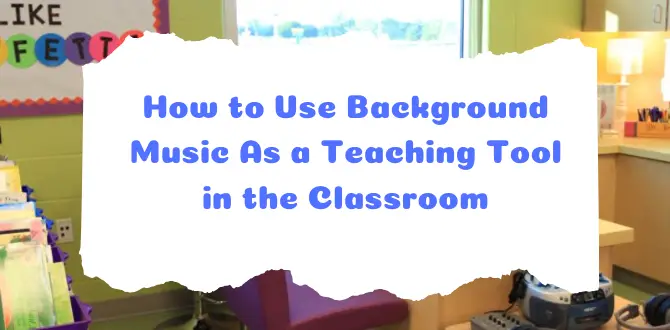
Most of the studies I discuss below were conducted with elementary and middle-school aged students. They assessed social, motor and academic skills with and without music playing in the classroom. The music was mainly relaxing instrumental quality at low volume. Both the teachers and students noticed that children were happy and more productive with background music.
I have a listening center in my classroom where five children can listen to an audio story or language lesson. Sometimes, I put music on and group the children according to activities and temperament.
For example, during arts and crafts activities I may put a few popular Disney songs with lyrics. I notice the children are calmer and work better in a group when they are all listening to music. I’m very careful about which songs I choose, but there are many fun and lively songs that the children already know. It’s like having a mutual friend involved in their activity.
Background music in the classroom has passed many tests for efficacy in regard to promoting learning. I have my own experience regarding that. But, there is no one-size-fits-all type of music or time to play the music. It depends on many factors that I will present here.
How Music Modifies Behavior
Stress is not just a privilege of older students even elementary students can feel stressed when they think they are not up to the mark at school. Music is a stress reducer for healthy people as well as people with health problems.
There are good reasons why music is played in the background just about everywhere we go except school. We hear music at the mall, dentist’s office, movie theater, doctor’s office, lawyer’s office and many times while we are holding on the phone. It is often sensitive to the season especially during the holidays in December. This music is not chosen at random. It is specifically picked to provide the right type of atmosphere according to the location.
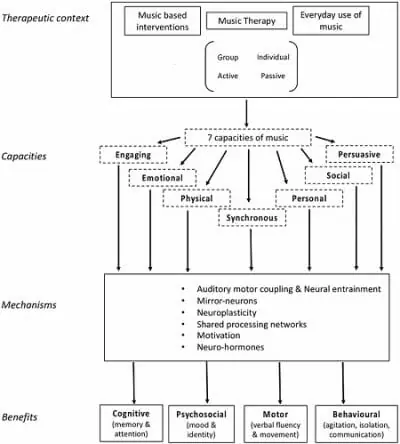
The Therapeutic Music Capacities Model (TMCM).
Source: A ‘Music, Mind and Movement’ Program for People With Dementia: Initial Evidence of Improved Cognition
Listening to soothing music can decrease blood pressure, anxiety attacks and heart rate. The study at the University of Maryland Medical Center shows that music has a positive effect on the physical health of adults, imagine how much effect it will have on children who are more susceptible to emotional triggers.
Music helps people process emotions rather than being overwhelmed by them. If it can help a university student reduce stress and study better, why not a younger student?
Background music is defined as music without words that is played while students work and learn in groups or independently. Some tests conducted on having music playing softly in the background have inconclusive results, and some teachers think it creates unwanted noise problems in the classroom. These results almost always show that fast, loud music is disruptive to the student’s concentration. Several tests even tried fast-paced music while adults were reading and concentrating with the same results.
However, even the skeptics agree low volume, calming background music improves behavior during playtime, helps children learn to sing songs and supports content-related curricular themes especially for young children.
According to research at John Hopkins, music aids in:
- Creating a positive learning environment
- Energizing learning activities
- Changing brain-wave states
- Improving memory
- Increasing attention
- Focusing concentration
- Releasing tension
- Increasing motivation
- Accentuating lesson themes
- Adding an element of fun
What Is the Mozart Effect?

The Mozart effect is a claim made in the early 90s that taking an exam after listening to a particular piece by Mozart for a specific amount of time, the participants had a higher level of reasoning skills than participants who took the exam after listening to soft music designed to lower blood pressure.
It was a very controversial idea at the time because some scientists couldn’t replicate the results. In spite of that, it became hugely popular and you may have heard of it. They claimed it worked because the subjects liked the music. So, the Mozart Effect was tried on rats with significantly good results. They could find their way through a maze much faster and without errors as the other rats. The results are temporary, when done in a study, and work with any type of music, not just Mozart.
I’m not suggesting you play Mozart all the time in your class, but this study is important for anyone who questions if music can change the behavior and ability of a person.
How to Choose the Right Music
The choice of music is also important. Some things to consider are the different effects that certain music evokes to various groups of children.
Culturally sensitive music
This one is gentle music described as a fusion of classical Indian music and pop
Music from different parts of the world
This is pure Carnatic classical music from India
Pop music from different countries
Some children may recognize some of these songs
Western classical
This one combines a wide selection of the most popular classical tunes
Film music
This one has a wide variety of songs from films including oldies-but-goodies. Film music is very evocative, so you need to select wisely
Disney music
This one is a playlist of familiar Disney tunes in soft instrumental format
There are more styles that need to be carefully chosen for different situations. Several studies point out that children are more sensitive to music they already know or is part of their culture. Playing South Indian or Japanese music in a class of third-graders in Kansas may not have the desired effect.
Having said that, I would also mention that introducing music from different cultures is broadening for children as long as you explain the background. This is especially true when the music coincides with the topic of the lesson.
When to Play Music with Lyrics
Since music affects cognitive function, it should also be chosen according to the activity. For example, when students are reading and writing, only instrumental music should be played. You can find instrumental version of many popular songs. At a time when the students are trying to understand language or formulate their own words, music with lyrics will just get in the way.
You can play music with lyrics, even popular songs, but the mood and theme shouldn’t bring unwanted feelings in a classroom. This means you have to watch out for love songs, rap songs and angry songs.
If you plan to play music in smaller groups, it’s important to have a good set of headphones. They need to fit comfortably and not irritate the child in any way or it will make the experience more unpleasant than positive. See my list of good kids headphones for school to know which one you should pick.
Things to Consider When Choosing Background Music
Music has a powerful impact on the emotions in adults as well as children. This has to be considered when you choose music for your classroom. Studies show that if you want to improve brain performance, you first need to improve your emotional well-being by listening to music that you like.
For example, the age of your students will determine what type of music you play. For all ages, soft, instrumental music is better for activities that require concentration and more lively music for creative activities. But, you must watch carefully, and do your own research on your particular class to see what works and what doesn’t.
In several case studies, the choice of music has a bearing on its benefit. A student’s musical preferences have an impact on the results of the research. If a child likes the music, the concentration levels tend to increase and if they don’t like the music they get distracted and their concentration tends to be disturbed.
For example, Indians prefer Indian classical music and Europeans prefer Western classical music. This is normal, and must be considered when choosing music for the classroom.
That’s not to say that students can’t be introduced to different kinds of music.
Different types of music include:
- Concentration-supporting music that is played softly in the background when students are reading or writing. It may increase attention levels, improve memory, expand the focused learning time and expand the thinking skills.
- Creativity-supporting music for problem-solving, goal setting, brainstorming or for the background while working on projects.
- Entry and exit music to greet your students with a welcoming atmosphere, set a learning rhythm and promote an interest in music.
- Active-learning music for increased productivity that promotes energy, stimulation, exercising and any activity where the children need to move around.
A Few Tips for Using Music in Your Classroom
To Promote Memory
After giving a lesson or for review just before an exam, you may make a PowerPoint or other display that covers the subject. The aim is to memorize words and facts. For these presentations, color visuals are useful for increasing memory. The students should be told to sit still and watch and there will be no talking during the presentation. Give the students a few minutes to get comfortable then start the appropriate theme-based music first for about 10 seconds then start the display accompanied.
The visuals shouldn’t contain too much text and each page should show for at least seven seconds and a little longer for some. At the end of the display, allow the music to play for about 30 seconds before you reduce the volume and turn it off. I recommend you do this at least twice, on different days, before an exam and maybe three time for certain subjects.
To Enhance Role Play
When your students are acting out anything, music not only adds to the verisimilitude, it also helps increase the memory of the subject. For example, if you are acting out a historical scene, the planets circling around the sun or the movement of electrons, protons and neutrons, music will boost the interest and excitement. Just as music adds tremendously to an action scene in a movie, you can use it to enhance an action scene in your classroom.
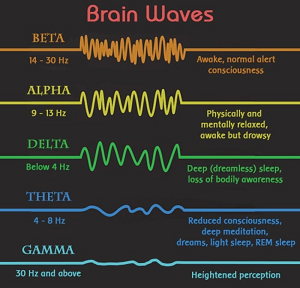
To Promote Memorization
Music that has a strong rhythm can help children memorize a large amount of information and facts. For example, Baroque music from Handel or Bach has strong beat that emphasizes focus and promotes deep concentration in the alpha brain wave state. Rhyme, melody and rhythm improve memory of passages or details from textbooks.
You can try using this type of music softly in the background during a math lesson. It is a well-known fact that music and math have a synergy. Remember, Albert Einstein was an excellent violin player. Also, Sir Arthur Conan Doyle, a medical doctor, created a highly-intelligent character, Sherlock Holmes, who was sensitive to music.
To Promote a Positive Learning Environment
The learning experience is usually better when the teacher prepares for the lesson in advance. We have all at one time or another had to wing it with a lesson without much forethought for various reasons. Music can go far to create a positive learning environment whether you have great lesson plans or took a day off. Music attracts children and makes them feel welcome. When they feel welcome, they are more motivated to learn.
To Set a Mood
Music can be relaxing or enlivening and you can use it to change the atmosphere in your classroom. For example, after soft, relaxing music during a reading exercise, you can change to a lively rhythm for an art class. I recommend playing it when the students first enter the classroom in the morning and when they exit to lunch, recess or at the end of the day.
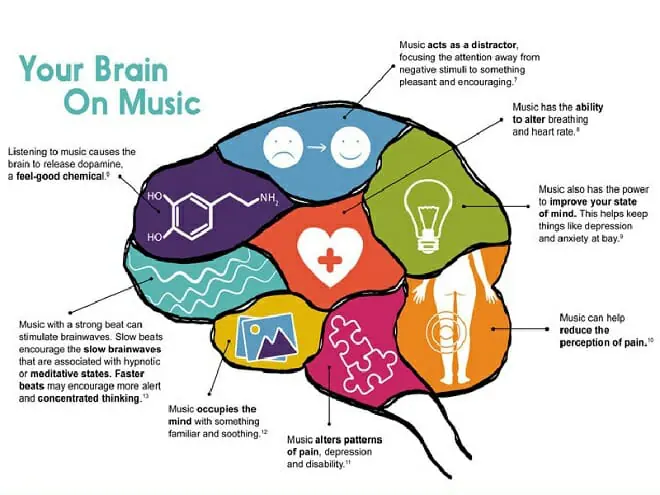
To Promote Community and Cooperation
You can vote on a classroom theme song or let your students choose background music at certain times of the day. Some teachers found that their students opened up to them more and shared experiences that never happened before music was introduced. I recommend starting small. Introduce music at a particular time for a few days or a week. You may not want to have music on for every lesson, but choose a lesson and music you think goes with it. If you do have a quiet time during the day, you may introduce soft, calming music at that time.
To Promote Historical Significance
One of the most popular uses of music in the classroom is for historical significance. When children are studying American or World History, playing music from the era gives a much broader picture of what they are learning. Renaissance music while studying Michelangelo and Leonardo Da Vinci makes the era come alive when it is combined with pictures. Banjo music and fiddle may go well when studying the American West. Celtic flute, bagpipes and other instruments from around the world can add tremendously to a classroom discussion or activity.
Children with Learning Disabilities and Background Music
Sometimes, children with certain learning disabilities may be included in a regular classroom because their caregivers believe that is the best treatment for their issues. I have had several children during my teaching years who found it difficult to stay on point, listen to the instructions and even sit still. They not only miss developing skills, but they also make it difficult for their peers to concentrate.

Percentage of 30 second intervals displaying in-seat behavior
Source: Utilizing Background Music to Increase In-Seat Behavior for Students with Disabilities
Other classrooms are wholly comprised of children with learning disabilities that exhibit difficulty with in-seat behavior. Playing background music has shown to have a calming effect on these children.
Even though some of the studies have drawbacks such as the number of students participating, they still show positive results in the few children that did participate. These include increased in-seat good behavior and a calmer demeanor when not in-seat.
The Many Uses of Classroom Background Music
I have given examples and suggestions and presented the research on the subject, but you need to watch your students to discover what music helps develop cognitive skills and what doesn’t. If you are going to try playing music in your classroom, don’t start with substandard equipment. You will kill the experiment before it has even started.
Good speakers, whether you use a DVD player, laptop or PC are essential for good quality sound. Remember, the music is intended as a soothing background, not as the focus of the children. If it sounds scratchy or weak, it will divert their attention in a negative way.
I recommend you test all your equipment before playing anything for your students to make sure it will produce the sound you want. Background music has been a great asset for my classroom and I hope it works for you too.
How to Cite this Article
Just copy the text below:
Ross, E. (2020, April 15). How to Use Background Music As a Teaching Tool in the Classroom [Based on 17 Researches and Studies]. MyTechClassroom. https://mytechclassroom.com/background-music-in-the-classroom/
Sources:
- Effect of background music and the cultural preference to music on adolescents’ task performance
https://www.tandfonline.com/doi/full/10.1080/02673843.2019.1689368 - The Benefits of Studying with Music
https://www.fnu.edu/benefits-studying-music/ - Harvard Men’s Health Watch: Music and health
https://www.health.harvard.edu/staying-healthy/music-and-health - Using Technology to Empower Students with Special Needs
https://www.theedadvocate.org/using-technology-to-empower-students-with-special-needs/ - Please Listen to Me: When Students Insist They Work Better While Listening to Music
https://literacyworldwide.org/blog/literacy-daily/2019/03/29/please-listen-to-me-when-students-insist-they-work-better-while-listening-to-music - Teachers’ Perceptions about the Use of Background Music in Preschool Free Play Time
https://discovery.ucl.ac.uk/id/eprint/1554648/1/pecera_v11n2_05.pdf - The Influence of Background Music on Learning in the Light of Different Theoretical Perspectives and the Role of Working Memory Capacity
https://www.frontiersin.org/articles/10.3389/fpsyg.2017.01902/full - A ‘Music, Mind and Movement’ Program for People With Dementia: Initial Evidence of Improved Cognition
https://www.frontiersin.org/articles/10.3389/fpsyg.2019.01435/full - John Hopkin’s Study: Integrating Music in the Classroom
http://frequencyoflearning.com/john-hopkins-study-integrating-music-in-the-classroom/ - The Mozart effect
https://www.ncbi.nlm.nih.gov/pmc/articles/PMC1281386/ - How does music benefit your classroom or school community the MOST?
https://safesupportivelearning.ed.gov/voices-field/how-does-music-benefit-your-classroom-or-school-community-most - Hitting the Right Note: Making Your Classroom Sound More Engaging with Background Music
https://creativeenglishteacher.com/blogs/news/hitting-the-right-note-making-your-classroom-sound-more-engaging-with-background-music - Music in the Classroom: Distraction or Study Tool?
https://www.govtech.com/education/news/Music-in-the-Classroom-Distraction-or-Study-Tool.html - Utilizing Background Music to Increase In-Seat Behavior for Students with Disabilities
https://digitalcommons.csumb.edu/cgi/viewcontent.cgi?article=1135&context=caps_thes_all - Mozart Effect – Infographic by Hannah Smith
https://infograph.venngage.com/p/180148/mozart-effect - All About Brainwaves
https://naturallakeland.com/all-about-brainwaves/ - Can Music Really Affect Our Mood?
https://www.vibe105to.com/tuned-in/can-music-really-affect-our-mood
Last Updated on August 31, 2023 by Emily
- Facebook9
- Twitter21
- Pinterest67
- 97shares


